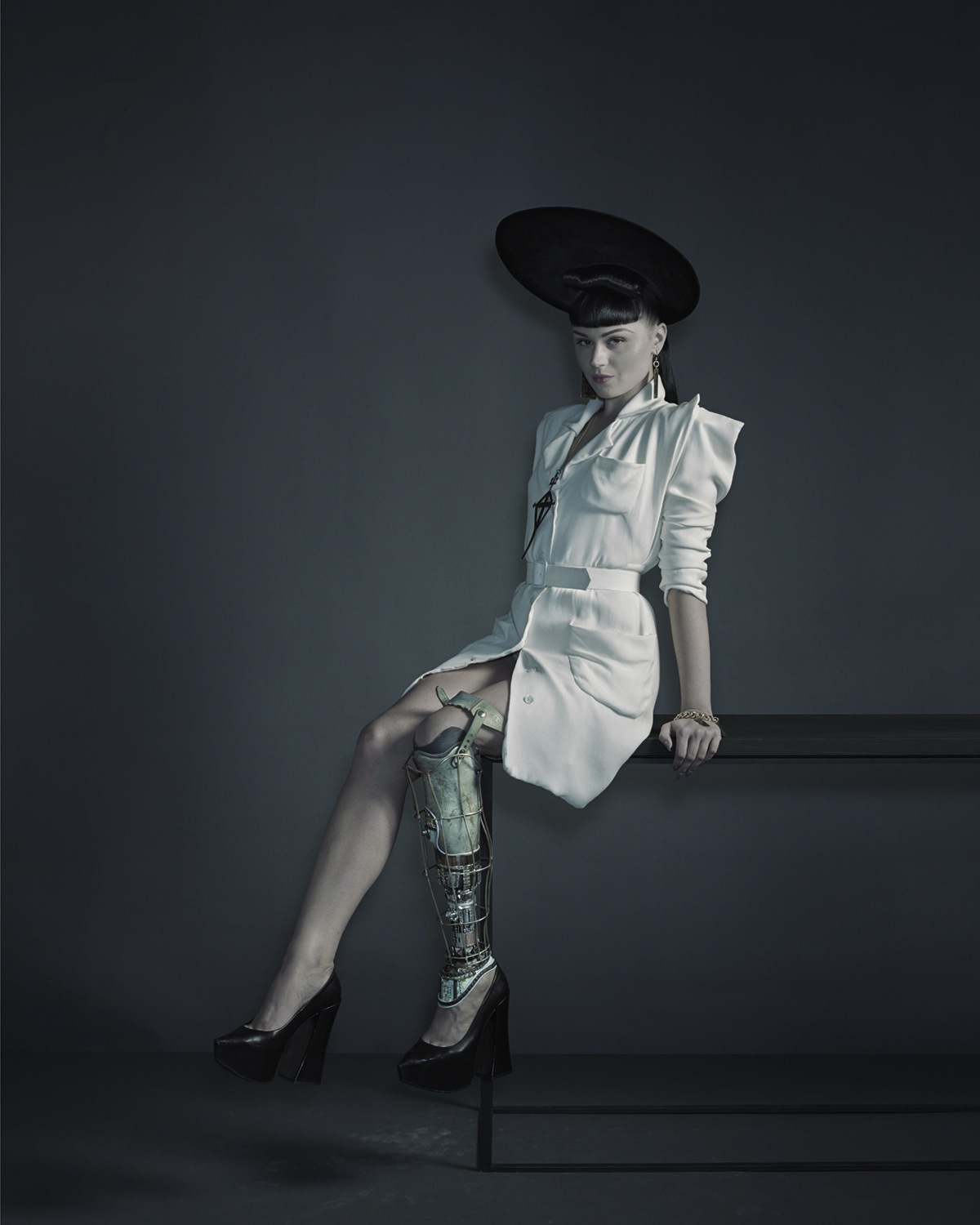
Viktoria Modesta photographed by Nadav Kander for the New York Times Magazine, 2013
This week we're launching Exposure: a new weekly column by Rick Poynor. It will appear every Tuesday. —The Editors
Do the able-bodied still pity people with disabilities? The terms themselves enshrine a judgement. No one, whatever the circumstances, wants to be defined by something missing. Yet even an event as publicly positive and as rapturously received now as the Paralympic Games still casts individuals with a “primary impairment” as heroic battlers who have managed against the odds to overcome the sad disadvantage of what they lack, their athletic triumphs a sobering lesson to us all.
Viktoria Modesta’s left leg was injured at birth and she endured a series of corrective operations as a child in the USSR. At the age of twenty, rejecting the image of victim, she persuaded a surgeon to cut away the damaged limb below her knee, which was preventing her from becoming herself. In the UK, she built a career as an amputee performance artist and self-styled “bionic” singer, and in the spectacular closing ceremony of the 2012 Paralympics she performed as a Snow Queen. She is seen in a picture by Nadav Kander published in the New York Times Magazine in 2013.
Modesta wears a “retro futuristic” leg, like a robotic component in a medical harness, created by Sophie de Oliveira Barata, a prosthetic sculptor who runs a studio in London called The Alternative Limb Project. The Times article showed seven other people photographed by Kander displaying their customized replacements. In each portrait, there is a tension between the normality of the person and pose and the artificiality of the set design, which directs maximum attention to the startling prosthetic inventions, though it might have served the theme of liberating empowerment better to show the wearers at ease in their ordinary environments.
The picture of Modesta betrays a slight awkwardness. In glammed-up fashion photos, and in an audacious, Gaga-esque music video where the leg mutates into a provocative metal fetish-spike, she always looks poised and commanding. Here, she is caught between the desire to perform in full regalia for the camera and consenting to reveal something closer to her off-duty self. Whether it was Kander’s or director of photography Kathy Ryan’s decision, perching her on the edge of the minimalist table leaves the perfectly functional alternative limb dangling above the floor like its only purpose is adornment. This doesn’t change the fact that flaunting such fabulous personalized extensions has the potential to provoke not pity but admiration and envy. A sea change in perceptions of physical impairment may even be under way.See all Exposure columns
